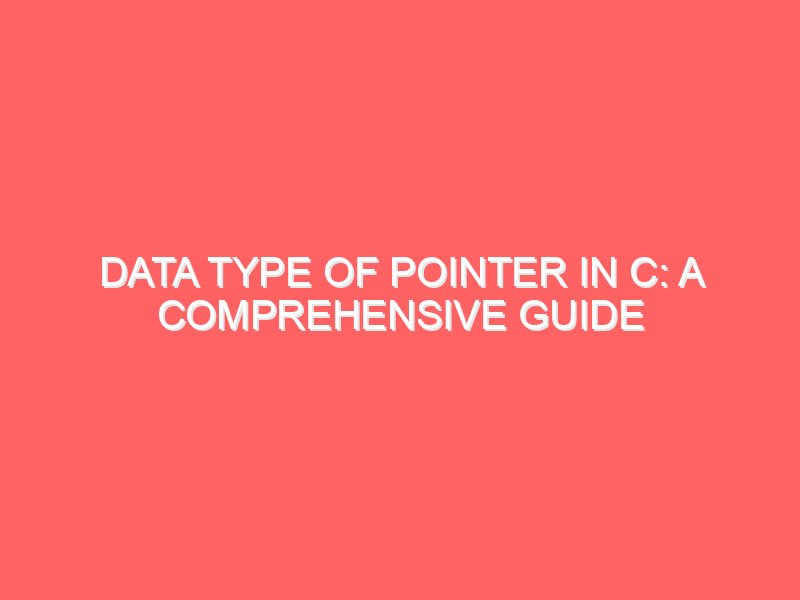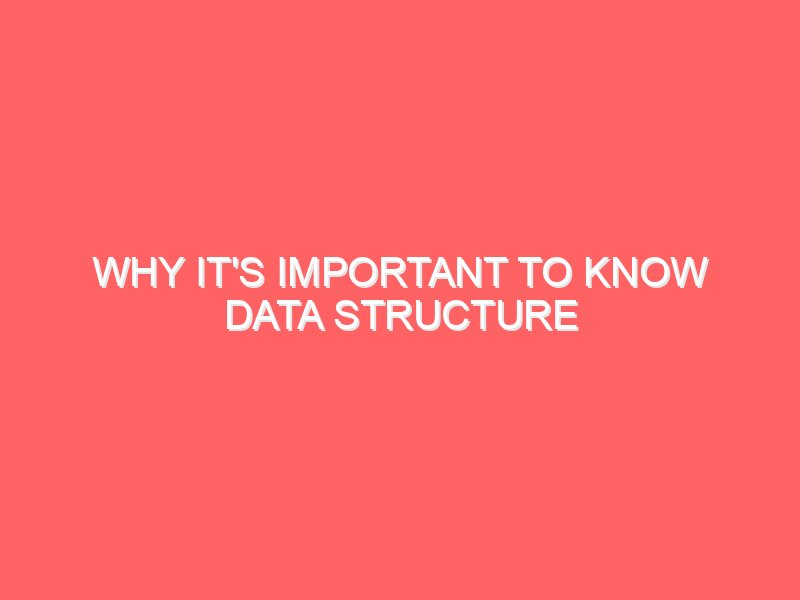Pointers are a fundamental aspect of C programming, providing powerful capabilities for memory management and data manipulation. Understanding pointers and their data types is crucial for any programmer aiming to master C. This blog will delve into the intricacies of pointers, including their data types, usage, best practices, and common misconceptions. We’ll also include visual aids, myth busters, and fun facts to make learning about pointers engaging and informative.
Introduction to Pointers
What is a Pointer?
A pointer is a variable that stores the memory address of another variable. Pointers enable direct access and manipulation of memory, making them indispensable for tasks like dynamic memory allocation, array handling, and function calls.
Basic Syntax of Pointers
int *ptr; // Declaration of an integer pointer
int var = 10;
ptr = &var; // Assigning the address of var to the pointer
In the above code, ptr is a pointer to an integer, and it stores the address of the variable var.
Data Types of Pointers
Pointers in C can point to different data types. The data type of a pointer determines the type of data it points to and the operations that can be performed on the data. Here are some common pointer data types:
Integer Pointers
int *ptr;
int var = 10;
ptr = &var;
Integer pointers point to integer variables. The pointer ptr in the example points to the integer variable var.
Character Pointers
char *ptr;
char var = 'A';
ptr = &var;
Character pointers point to character variables. They are also used for string manipulation.
Float Pointers
float *ptr;
float var = 3.14;
ptr = &var;
Float pointers point to float variables.
Double Pointers
double *ptr;
double var = 3.14159;
ptr = &var;
Double pointers point to double variables.
Void Pointers
void *ptr;
int var = 10;
ptr = &var;
Void pointers can point to any data type. They are often used for generic data handling and memory allocation.
Pointer to Pointer (Double Pointer)
int var = 10;
int *ptr1;
int **ptr2;
ptr1 = &var;
ptr2 = &ptr1;
A pointer to a pointer stores the address of another pointer. Double pointers are used in complex data structures like multidimensional arrays and linked lists.
Visualizing Pointers
Memory Layout
Understanding how pointers interact with memory is crucial. The following diagram illustrates the memory layout for different pointer types:
+-----------------+
| Memory Address|
|-----------------|
| 0x1000 | --> int var = 10;
| 0x1004 | --> float var = 3.14;
| 0x1008 | --> char var = 'A';
+-----------------+
int *ptr = &var;
ptr stores the address 0x1000
float *fptr = &var;
fptr stores the address 0x1004
char *cptr = &var;
cptr stores the address 0x1008
Pointer Arithmetic
Pointer arithmetic allows traversal of memory addresses. For example, incrementing an integer pointer moves it to the next integer’s memory location.
int arr[] = {10, 20, 30, 40};
int *ptr = arr;
for(int i = 0; i < 4; i++) {
printf("%d\n", *ptr);
ptr++;
}
In this example, ptr traverses through the array arr, printing each element.
Best Practices for Using Pointers
Initialize Pointers
Always initialize pointers before use. Uninitialized pointers can lead to undefined behavior and crashes.
int *ptr = NULL; // Initialize to NULL
Avoid Dangling Pointers
Dangling pointers refer to memory locations that have been freed. Always set pointers to NULL after freeing memory.
int *ptr = (int*)malloc(sizeof(int));
free(ptr);
ptr = NULL; // Avoid dangling pointer
Use const Keyword
Use the const keyword to prevent modification of the data pointed to by a pointer.
const int *ptr = &var;
Check for NULL
Always check if a pointer is NULL before dereferencing it.
if (ptr != NULL) {
// Safe to dereference
printf("%d", *ptr);
}
Advanced Pointer Concepts
Function Pointers
Function pointers store the address of functions and can be used to call functions dynamically.
void (*funcPtr)();
void myFunction() {
printf("Hello, World!");
}
funcPtr = &myFunction;
funcPtr(); // Calling the function using the pointer
Dynamic Memory Allocation
Dynamic memory allocation allows for flexible memory management. Pointers are used with functions like malloc, calloc, realloc, and free.
int *ptr = (int*)malloc(sizeof(int) * 10); // Allocate memory for 10 integers
if (ptr != NULL) {
for (int i = 0; i < 10; i++) {
ptr[i] = i;
}
}
free(ptr); // Free allocated memory
Linked Lists
Pointers are essential for creating and managing linked lists. Each node contains a pointer to the next node.
struct Node {
int data;
struct Node* next;
};
struct Node* head = NULL;
struct Node* second = NULL;
head = (struct Node*)malloc(sizeof(struct Node));
second = (struct Node*)malloc(sizeof(struct Node));
head->data = 1;
head->next = second;
second->data = 2;
second->next = NULL;
Myth Busters
Myth 1: Pointers Are Always Dangerous
Busted: While pointers can lead to errors if misused, they are powerful tools that provide fine-grained control over memory. Proper use and adherence to best practices make pointers safe and efficient.
Myth 2: Void Pointers Are Useless
Busted: Void pointers are versatile and essential for generic programming and dynamic memory allocation. They can point to any data type, making them highly useful in certain contexts.
Myth 3: Pointers Are Only for Advanced Programmers
Busted: Pointers are a fundamental concept in C programming. With proper understanding and practice, even beginners can effectively use pointers.
Fun Facts
- Pointer Arithmetic: Pointer arithmetic is scaled based on the data type. For example, incrementing an integer pointer moves it by
sizeof(int)bytes. - NULL vs. nullptr: In C++, the
nullptrkeyword is used instead ofNULLto indicate a null pointer, providing better type safety. - Function Pointers in Action: Function pointers can be used to create callback functions, enabling flexible and dynamic function calls.
- Memory-Efficient Structures: Using pointers in data structures like linked lists and trees can save memory and improve performance by dynamically allocating memory only when needed.
Conclusion
Pointers are a powerful feature of C programming, enabling direct memory access and manipulation. Understanding the different data types of pointers, their usage, and best practices is crucial for effective C programming. By adhering to best practices, avoiding common pitfalls, and leveraging the versatility of pointers, you can write efficient and robust C code.
At Emancipation Edutech Private Limited in Ranchi, we offer comprehensive courses that cover pointers and other advanced C programming concepts. Our curriculum is designed to provide hands-on experience and practical knowledge, ensuring you become proficient in C programming. Whether you’re a beginner or looking to refine your skills, our courses include:
- Live Classroom Sessions: Engage in interactive learning with our experienced instructors.
- Recorded Sessions: Access recorded lectures anytime via our Play Store application.
- Internships and On-the-Job Training: Gain real-world experience and industry exposure.
Why Choose Us?
- Affordable Pricing: Our courses are pocket-friendly, making quality education accessible to everyone.
- Recognized Training: We are registered under the Ministry of Corporate Affairs and MSME, and recognized by the Department for Promotion of Industry and Internal Trade.
Join us at Emancipation Edutech to master C programming and other programming languages. Visit our website https://emancipation.co.in or contact us at +919264477176 for more information.
By understanding and mastering pointers, you can unlock the full potential of C programming and tackle complex programming challenges with confidence. Happy coding!



